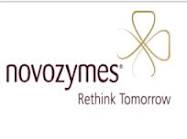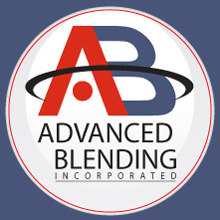MetFloc Process Compared to Other Processes for Metal Removal from Wastewater
Assessment
of Chemical Processes
for Metal Removal from Wastewater
| Sample Type | Process | Suitability |
| Highly acidic multi-metal waste solution with As, Cr(VI), Ni, Cd, Zn, Pb, Se, V, Fe, Al. | MetFloc process | Excellent. Not pH sensitive. Maximum removal of all metals in ONE pH treatment cycle. No intermediate step to reduce Cr(VI) to Cr(III). |
| Hydroxide precipitation (caustic soda / lime) | Precision multiple pH adjustments required. Maximum removal not possible for all the metals in solution. Intermediate step to reduce Cr(VI) to Cr(III) can produce noxious gases. Amphoteric (dual solubility curves) property of Zn can also affect removal rates. | |
| Iron / Alum absorption / coprecipitation | Precision multiple pH adjustments required. Maximum removal not possible for all the metals in solution. Intermediate step to reduce Vr(VI) to Cr(III). Amphoteric (dual solubility curves) property of Zn can also affect removal rates. | |
| Sulfate precipitation | Precision multiple pH adjustments required. Maximum removal not possible for all the metals in solution. | |
| Thiocarbamates | Effective, but process depends on pre- and post-treatment. pH-sensitive steps. | |
| Electrochemical cells | Presences of free native Fe and Al ions interferes with the electro-chemical generation of free Fe and Al ions, a critical step in the process. | |
| Resin beds | Competition for adsorption sites by the various metals will drastically reduce resin beds of adsorption capacity/ Cr(VI) is poorly released fro the anion resin bed. Presence of Fe can also be a problem. | |
| Spent plating bath chelated / complexed with ammonia sulfates; Cr(VI); Zn. | MetFloc process | ONE cycle maximum removal off all metals even in the presence of interfering agents. |
| Hydroxide precipitation | Not effective in the presence of interfering agents. | |
| Iron / Alum absorption / coprecipitation | Not effective in the presence of interfering agents. | |
| Sulfate precipitation | Can be effective in the presence of interfering agents, but hazardous fumes of hydrogen sulfide gas can be a safety problem. | |
| Thiocarbamates | Can be effective in the presence of interfering agents. | |
| Electrochemical cells | Not effective in the presence of interfering agents. | |
| Resin beds | Interfering agents will render the beds inoperable. | |
| Spent plating bath complexed with surfactants and ethylene diamine tetra acetic acid (EDTA); sequestering agents; Cu; Sn, Pb. | MetFloc process | ONE cycle maximum removal off all metals even in the presence of interfering agents. |
| Hydroxide precipitation | Not effective in the presence of EDTA. | |
| Iron / Alum absorption / coprecipitation | Not effective in the presence of EDTA. | |
| Sulfate precipitation | Effective, but hydrogen sulfide gas emission can be a safety issue. | |
| Thiocarbamates | Can be effective in the presence of interfering agents. | |
| Electrochemical cells | Not effective. | |
| Resin beds | Not effective. | |
| Mining metal-laden wastewater high in Biochemical Oxygen Demands (BODs); Cu; Fe. | MetFloc process | Maximum removal of metals and reduction of BODs. |
| Hydroxide precipitation | Not effective. | |
| Iron / Alum absorption / coprecipitation | Not effective. | |
| Sulfate precipitation | Not effective. | |
| Thiocarbamates | Not effective. | |
| Electrochemical cells | Not effective. | |
| Resin beds | Not effective. | |
| Aircraft maintenance strip shop; Phenols; Cd; Ni; Zn; Fe; Cr(VI); Cu; low levels of organics, oil & grease. | MetFloc process | Maximum removal of metals; reduction of Phenols and other organics. |
| Hydroxide precipitation | Not effective. | |
| Iron / Alum absorption / coprecipitation | Not effective. | |
| Sulfate precipitation | Not effective. | |
| Thiocarbamates | Not effective. | |
| Electrochemical cells | Not effective. | |
| Resin beds | Not effective. |





